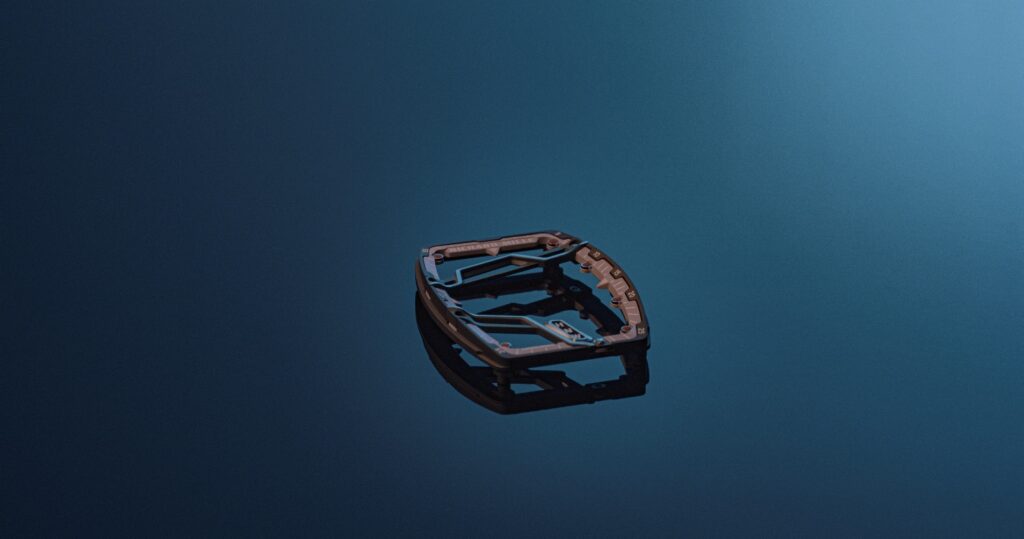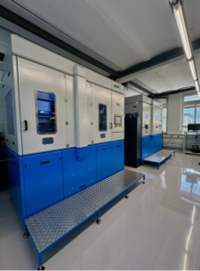Innovation: Three projects nominated as finalists in the Watch Medtech Challenge
Innovation: Three projects nominated as finalists in the Watch Medtech Challenge Published on the décembre 8, 2024 What do SurFunction, Synova and Altair/GelSight have in common ? Well, not only do all three have a key role to play in the medical technology of tomorrow but they have just been nominated as finalists in the 2024 Watch Medtech Innovation Challenge. Launched in 2018 by EPHJ and Fondation Inartis, this competition of ideas, which is open to all of the show’s exhibitors, aims to identify technologies from watchmaking subcontractors so that they can be incorporated into medtech solutions. The aim? To help the winners open up new markets and understand what they need to do to achieve this. Surfunction GmbH The first technology, developed by German company SurFunction GmbH, enables fast and precise use of direct laser interference patterning (DLIP) technology. This technology, patented under the name ELIPSYS®, produces functional surface structures. It could be used to improve cell adhesion in implants, as the literature on human fibroblasts and osteoblasts has demonstrated that not only the adhesion but also the orientation of cells on various polymers can be precisely controlled using DLIP. DLIP thus opens up new possibilities in terms of tissue regeneration and the design of biocompatible surfaces, for example by replacing costly processing methods (blasting, cleaning and etching) for preparing dental implant surfaces. Altaïr Consulting SA The second project, from Altair Consulting SA, based in Plan-les-Ouates (Switzerland), draws on 3D scanning. Using the GelSight 3D digital scanner, the company can model surfaces and capture shapes in real time. Already deployed by the Massachusetts Institute of Technology (MIT), American forensics teams and cutting-edge industries such as ballistics and watchmaking, this technology could be used to collect precise information on 3D surfaces to feed back into models for haptic medical technologies. This could make it possible to improve the functionality of certain finger prostheses, for example. Synova Drawing on water-jet guided laser cutting technology, the third project comes from Synova, based in Vaud (Switzerland). The Laser MicroJet (LMJ) is a hybrid method of machining which combines a laser with a ‘hair-thin’ water jet that precisely guides the laser beam by means of total internal reflection in a manner similar to conventional optical fibres. The water jet continually cools the cutting zone and efficiently removes debris. As a ‘cold, clean and controlled laser’, Synova’s LMJ technology resolves the significant problems associated with dry lasers such as thermal damage, contamination, deformation, debris deposition, oxidation, micro-cracks and taper. The application of LMJ to stent cutting would yield high-quality products in many alloys including CoCr, NiTi, Cr–Pt, stainless steel and magnesium alloys. Every year since 2018, between three and five diversification projects have been designed and tested by Fondation Inartis in partnership with the show’s exhibitors. This is an outstanding opportunity for watchmaking subcontractors to be challenged, reduce their work burden a little and perhaps line up some new commercial opportunities. Juliette Lemaignen, Fondation Inartis Share this article Facebook Twitter Youtube News 25 avril 2025 Emissa dévoile le Precimill, un centre d'usinage compact et performant 25 mars 2025 Medtech – a rapidly expanding part of the EPHJ Show 20 mars 2025 CMT RICKENBACH – Photochemisches Ätzen: ein subtiles Verfahren für flache Bauteile 20 mars 2025 WatchDec – die Hochpräzision im Dienst der Medizintechnik Show all news










